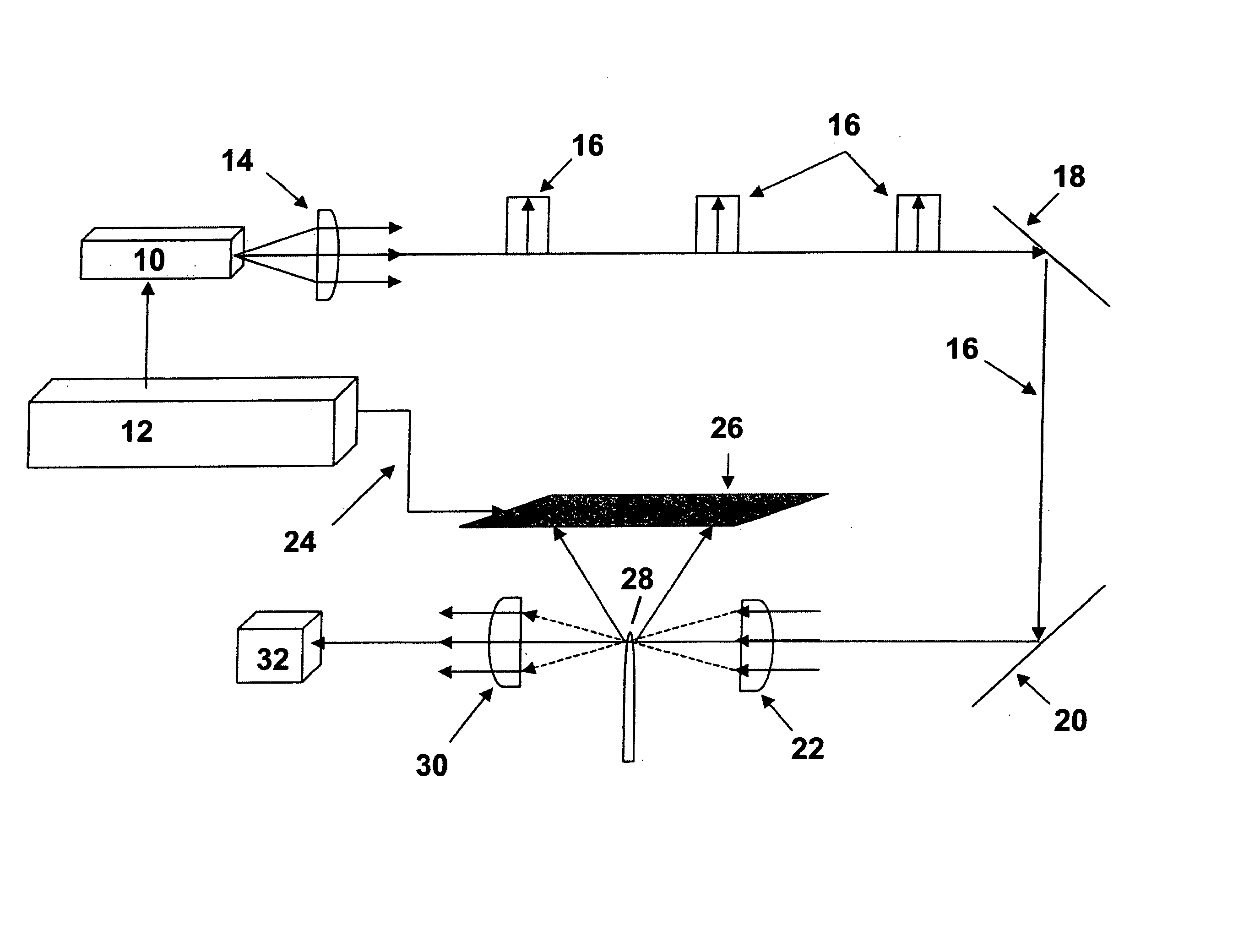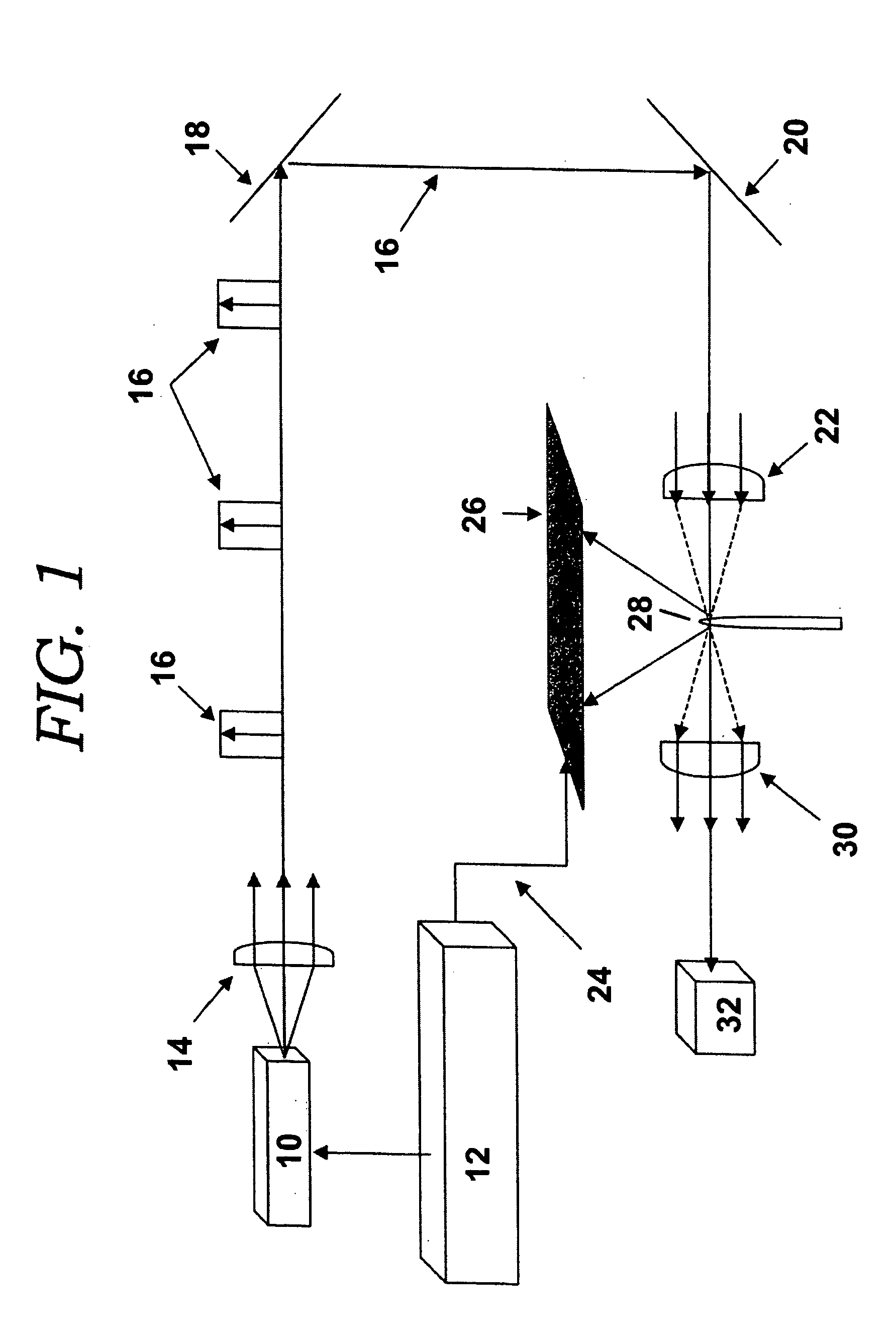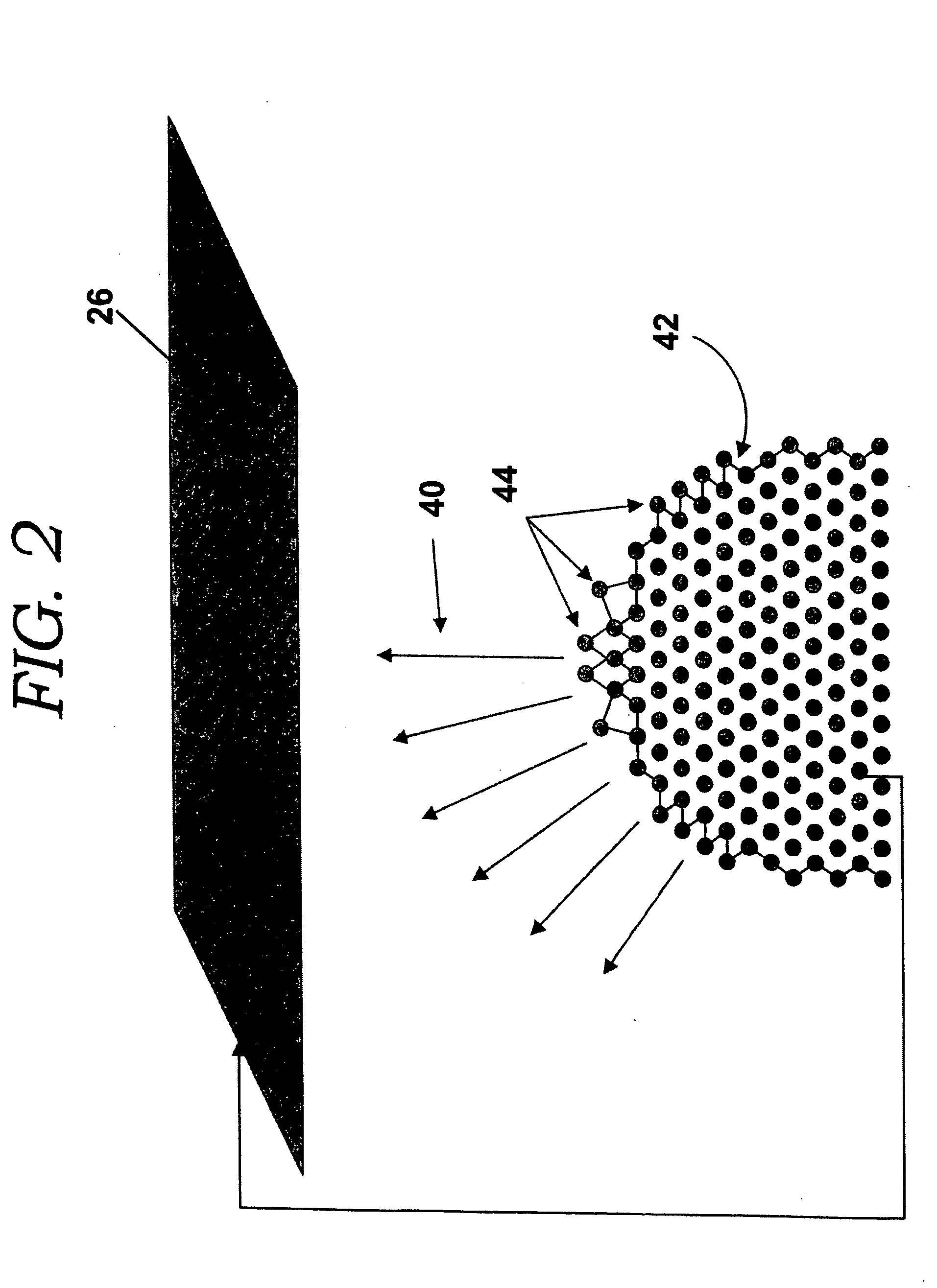Laser stimulated atom probe characterization of semiconductor and dielectric structures
- Summary
- Abstract
- Description
- Claims
- Application Information
AI Technical Summary
Benefits of technology
Problems solved by technology
Method used
Image
Examples
Embodiment Construction
The following discusses use of the laser stimulated atom probe technique for atom probe microscopy of nanometer scale silicon tip structures. It is understood that the laser stimulated atom probe technique of the present drawings may be used to analyze any semiconductor or dielectric structure, the discussion of silicon structures considered to be exemplary only and in no way limiting in scope.
FIG. 1 illustrates a schematic arrangement of a laser stimulated atom probe, which utilizes a conventional atom probe providing a field emission tip and ion detector arrangement. The system shown in the drawing includes a laser 10 and laser controller 12. The laser controller directs the laser to produce short laser pulses and synchronous electronic timing signals 24 to the atom probe, which includes a position sensitive detector 26. Pulses of light 16 pass through an optical system that includes a collimation lens 14 mirrors 18, 20 and a microscope objective lens 22. The light is focused on...
PUM
 Login to View More
Login to View More Abstract
Description
Claims
Application Information
 Login to View More
Login to View More - R&D
- Intellectual Property
- Life Sciences
- Materials
- Tech Scout
- Unparalleled Data Quality
- Higher Quality Content
- 60% Fewer Hallucinations
Browse by: Latest US Patents, China's latest patents, Technical Efficacy Thesaurus, Application Domain, Technology Topic, Popular Technical Reports.
© 2025 PatSnap. All rights reserved.Legal|Privacy policy|Modern Slavery Act Transparency Statement|Sitemap|About US| Contact US: help@patsnap.com



